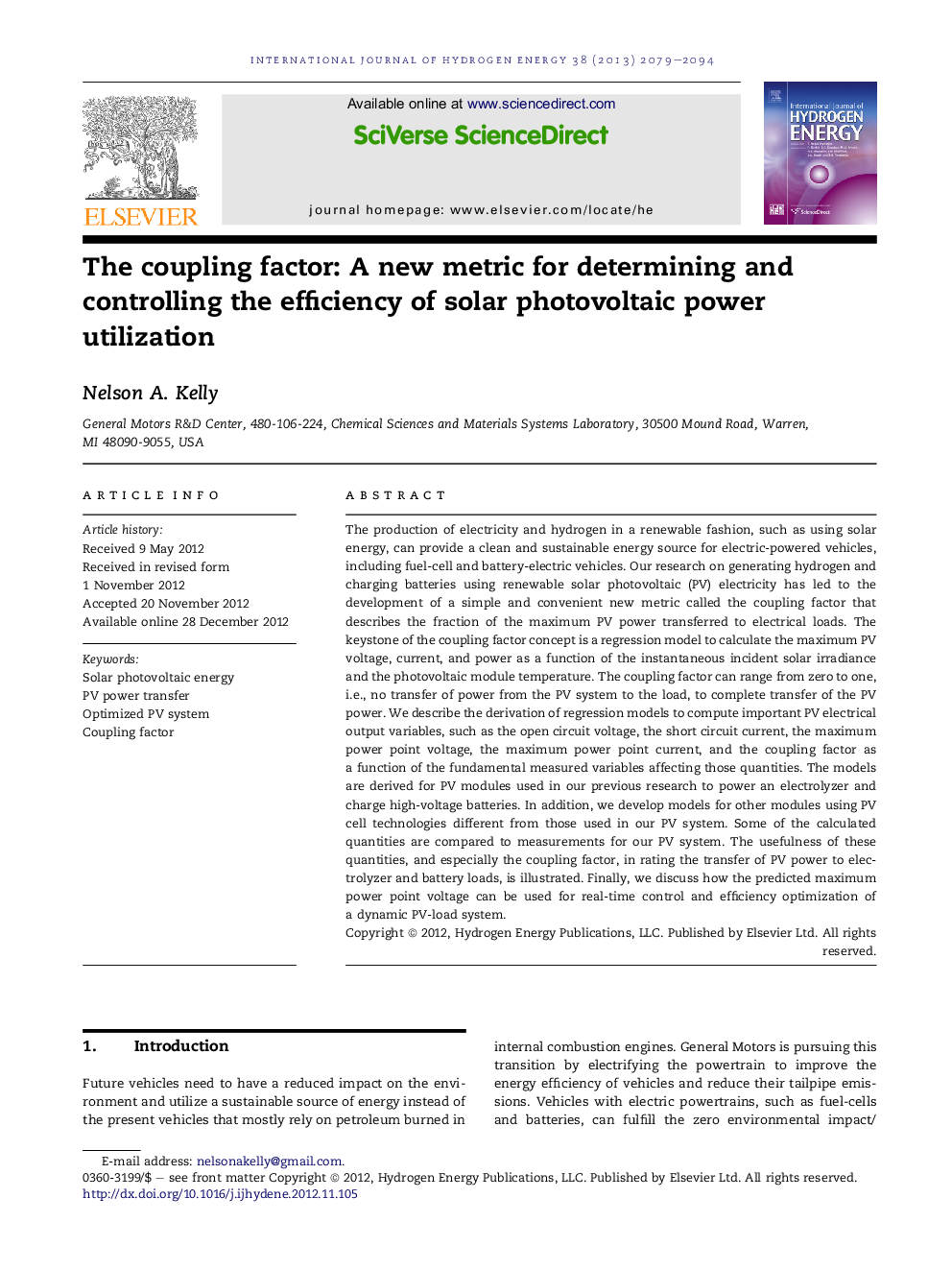| Article ID | Journal | Published Year | Pages | File Type |
|---|---|---|---|---|
| 1274071 | International Journal of Hydrogen Energy | 2013 | 16 Pages |
The production of electricity and hydrogen in a renewable fashion, such as using solar energy, can provide a clean and sustainable energy source for electric-powered vehicles, including fuel-cell and battery-electric vehicles. Our research on generating hydrogen and charging batteries using renewable solar photovoltaic (PV) electricity has led to the development of a simple and convenient new metric called the coupling factor that describes the fraction of the maximum PV power transferred to electrical loads. The keystone of the coupling factor concept is a regression model to calculate the maximum PV voltage, current, and power as a function of the instantaneous incident solar irradiance and the photovoltaic module temperature. The coupling factor can range from zero to one, i.e., no transfer of power from the PV system to the load, to complete transfer of the PV power. We describe the derivation of regression models to compute important PV electrical output variables, such as the open circuit voltage, the short circuit current, the maximum power point voltage, the maximum power point current, and the coupling factor as a function of the fundamental measured variables affecting those quantities. The models are derived for PV modules used in our previous research to power an electrolyzer and charge high-voltage batteries. In addition, we develop models for other modules using PV cell technologies different from those used in our PV system. Some of the calculated quantities are compared to measurements for our PV system. The usefulness of these quantities, and especially the coupling factor, in rating the transfer of PV power to electrolyzer and battery loads, is illustrated. Finally, we discuss how the predicted maximum power point voltage can be used for real-time control and efficiency optimization of a dynamic PV-load system.
► Developed a new metric, termed the coupling factor, for measuring photovoltaic power usage. ► Coupling factor has a simple range from zero to one. ► Evaluated the coupling factor for a photovoltaic system powering an electrolyzer and charging a battery. ► Real-time control of the coupling factor can improve photovoltaic energy usage.
